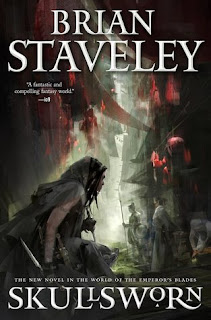309 pgs
In The Clockwork Dynasty, Daniel H. Wilson crafts an alternate-history story in which a secret society of automatons has been living amongst humanity for hundreds, if not thousands of years. Automatons, which are essentially robots, have a real-life history that dates back at least as far as ancient Greek mythology (think of the owl in the original Clash of the Titans movie). In Wilson’s version of history, these automatons, are self-aware, with emotions and intelligence, and have had centuries to enhance themselves through technology far more advanced than ours.
When June Stefanov was a young girl in Russia, her
grandfather told her he witnessed a soldier in WWII withstand a hail of bullets
and single-handedly destroy a German tank. He said the soldier had supernatural
strength and left behind a mysterious metal artifact, which he then presented
to her, and which she has worn as a necklace around her neck ever since. She
has spent the rest of her life investigating the mystery behind her grandfather’s
story. She travels the world hunting down examples of antique automatons, which
she believes hold the key to unlocking the mystery behind the relic she wears
around her neck.
June’s latest find is one of an automaton built hundreds of
years ago to resemble a 12-year-old girl. She eventually figures out how to
activate her, and when she does, she becomes noticed by the race of beings
she’s unwittingly been investigating her whole life. She soon finds herself in
the middle of a feud that has been brewing for hundreds of years, and her
survival becomes tied to that of this mysterious and fascinating race.
I really enjoyed Wilson’s three previous books, and once
again, he showcases his background in, and love for, robotics and has written a
story that is wholly unique. This time, however, his story falls more in the
fantasy genre, than in science fiction. He doesn’t spend a lot of time
establishing the roots of his story in real life science and technology, like a
lot of science fiction stories do, but instead, expects his readers to suspend
their beliefs and just enjoy the story, which I did.
★ ★ ★ ★ ☆
★ ★ ★ ★ ☆





